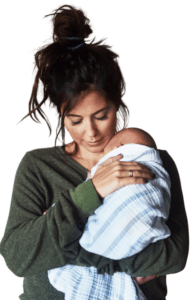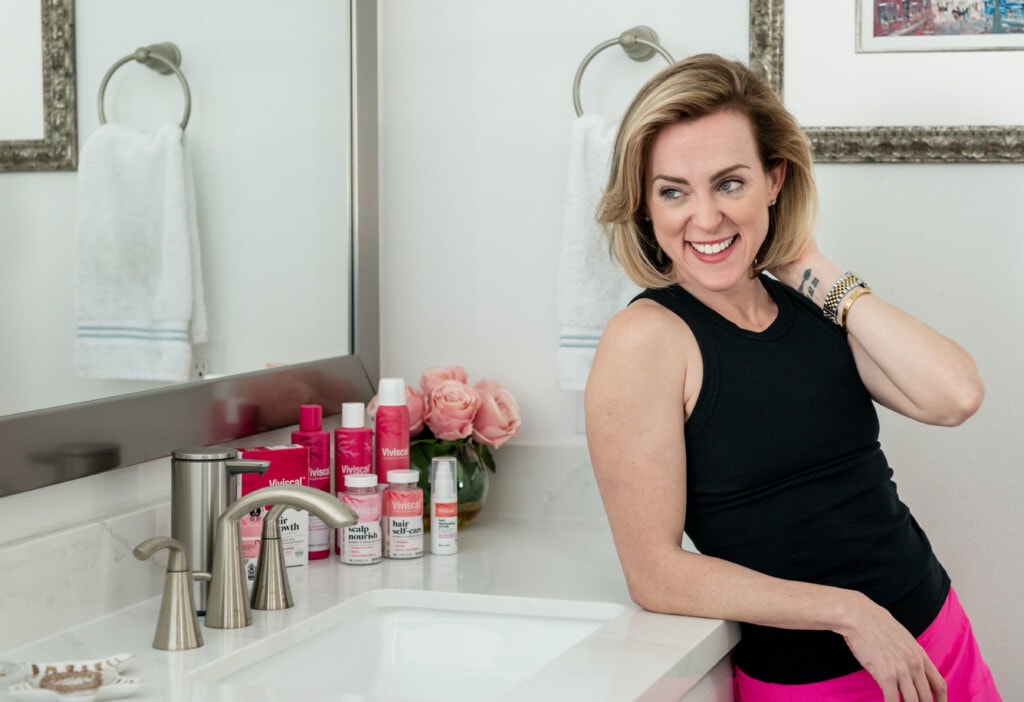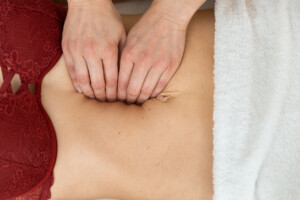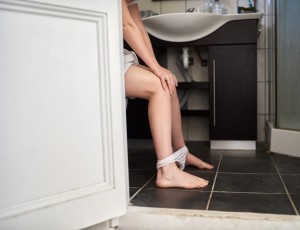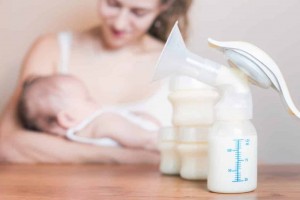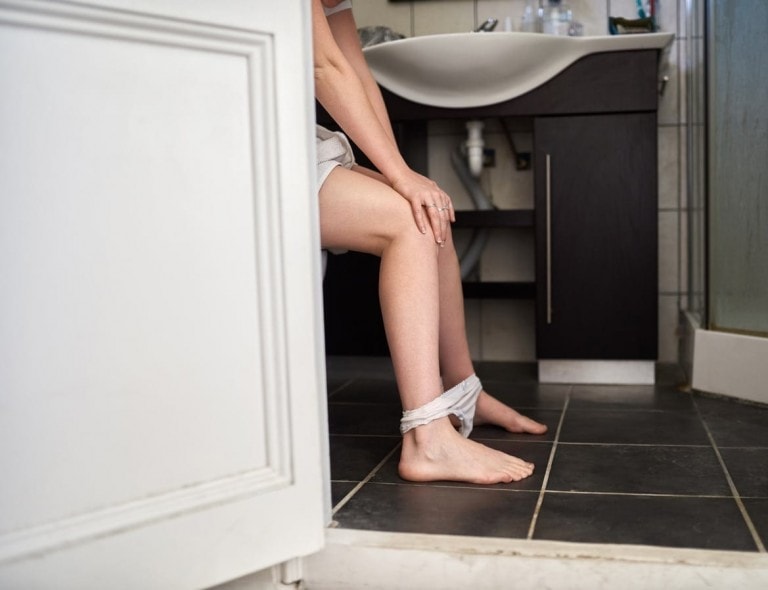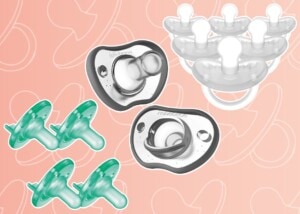After having my two kids, I wasn’t as prepared for the amount of hair loss I would experience. I knew about postpartum hair loss and that it would likely happen to me, but I wasn’t expecting how much or how long it would take for my hair to grow back. It’s been two years since I had my last child, my daughter. Now that I’m finally feeling more like myself again, I’m ready to prioritize my health, needs, and wants. It’s time to make time for me. Last year, I committed to a full body/mind health and wellness journey. Now, this year, I’m including my hair.
Why my hair?
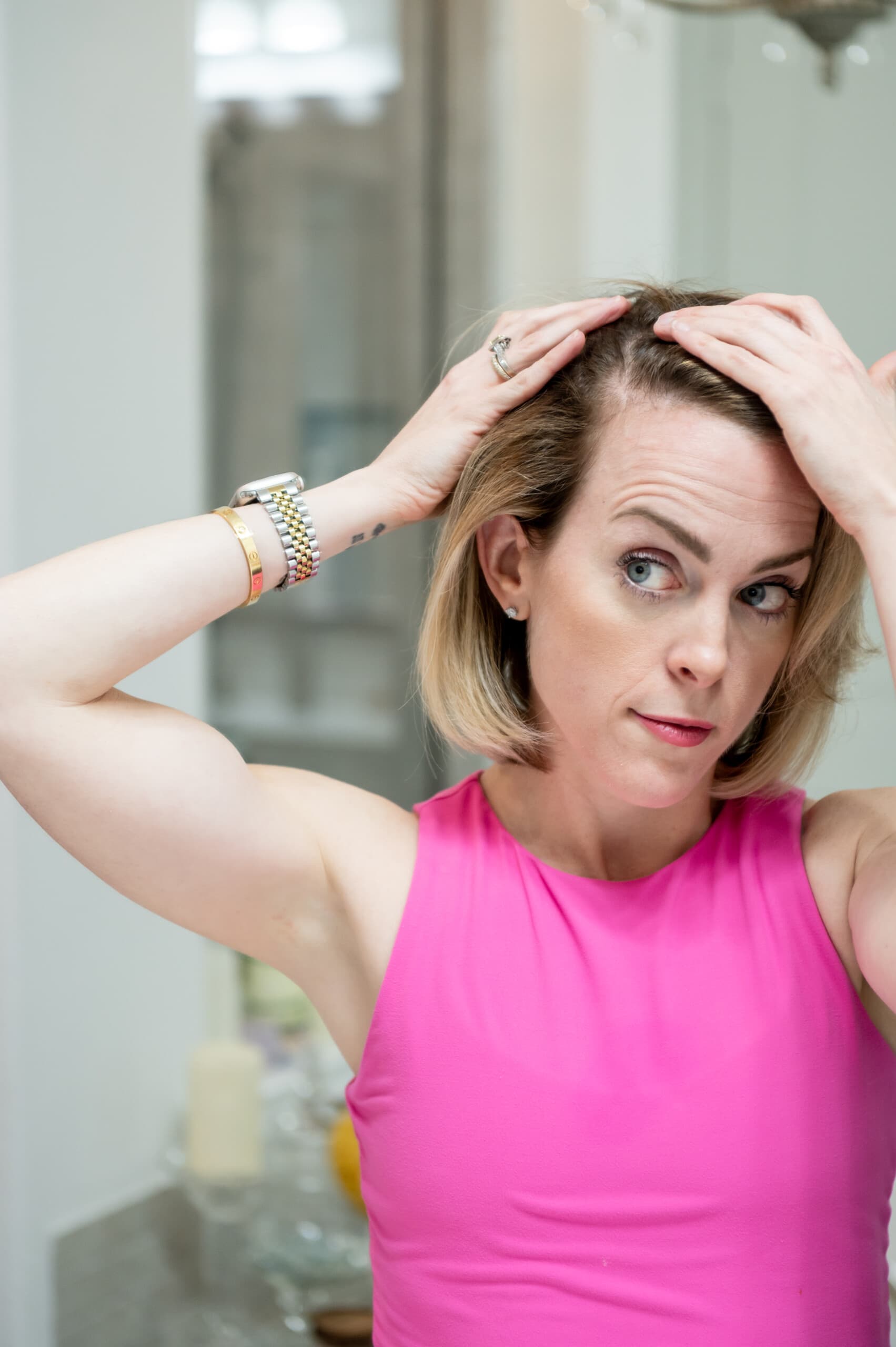
Currently, I have very thin, fine hair. My hair has always been fine, even when I was younger. But back then, I had a lot more of it. I even remember sitting at the hair salon when I was in middle school and high school, and the hairdresser told me on more than one occasion that I had “so much hair.” But as I’ve gotten older, it has thinned out. And once I had kids, it’s as if the thinning-out process went into hyperspeed! I feel like I barely have much left.
The hair loss wasn’t too bad after the birth of my first child. However, after having my second, it was way more noticeable to me. I’ve tried not to put too much thought or emphasis on it because I remember that I need to be kinder to myself. I’ve grown, birthed, and am caring for two beautiful children. I always tell mothers that they are beautiful just the way they are, and I am beautiful, too. Hair is just hair, right?
But as the months and now years have passed of me putting myself last on my priority list, my confidence also went away. When I looked in the mirror, I didn’t recognize the woman I was anymore. I learned it’s okay to want better for myself and do things that make me feel more confident. Last year, my goal was to get stronger, and I did! I lost 15 pounds and gained muscle. This year, I am continuing to focus on my health and wellness. I’m now including my hair in my health journey, too. Here’s what I’m doing for my “New Hair, New You” Renewal Plan. I’m starting it with Viviscal.
My “New Hair, New You” Renewal Plan
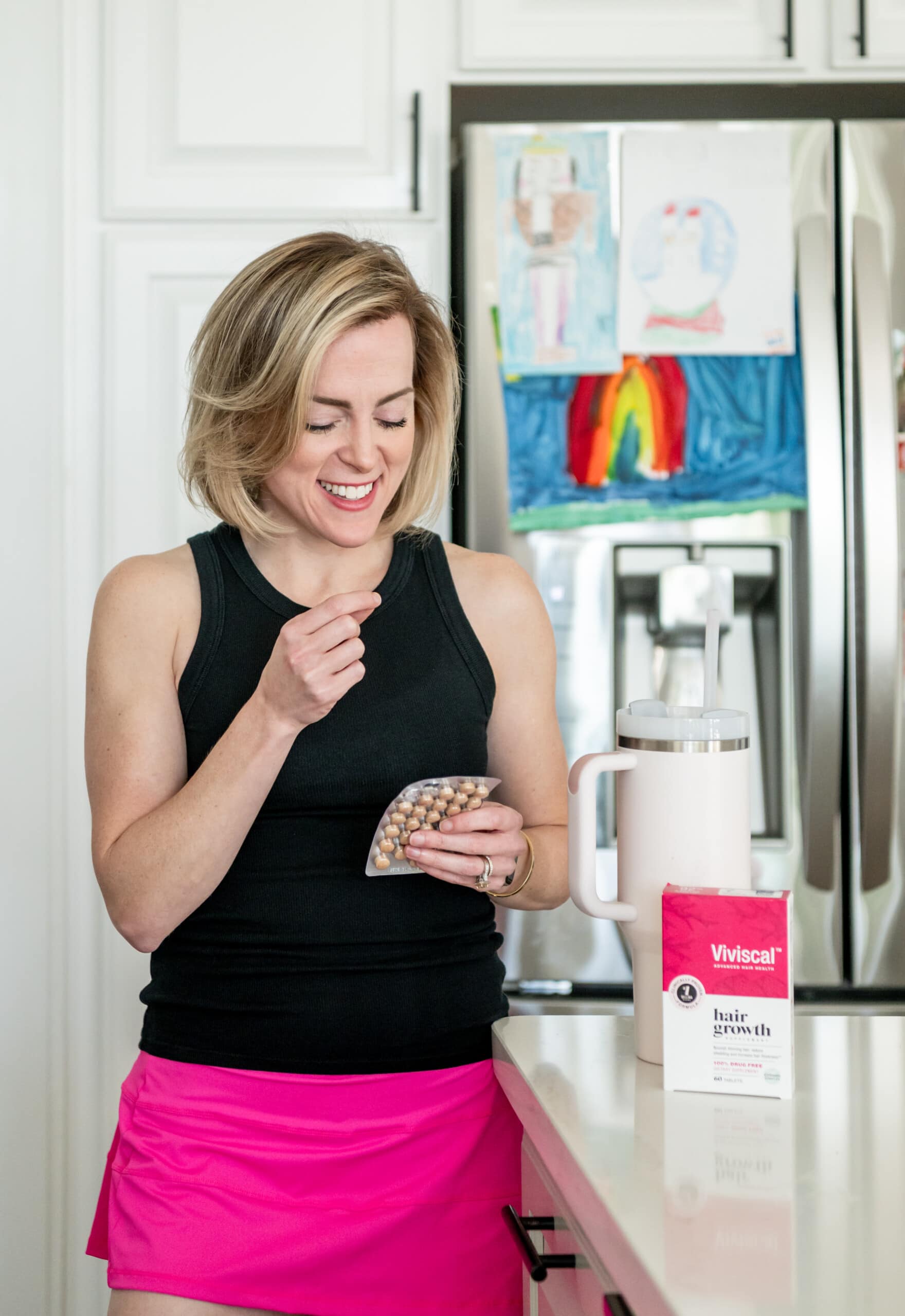
This May, my family and I are going to Maui! Maui has a very special place in our hearts because that is where my husband and I married nine years ago. I want to look and feel better than I did on my wedding day, so I am continuing to do my workouts five days a week, keep track of my diet/macros, and I’m now starting to use Viviscal to help me get fuller, thicker hair from the inside out. My hair has been one of my least favorite features, especially after experiencing postpartum hair loss, so now I’m doing something about it. Here’s what I’m using and doing for my new hair renewal for healthier postpartum hair.
Hair Supplements
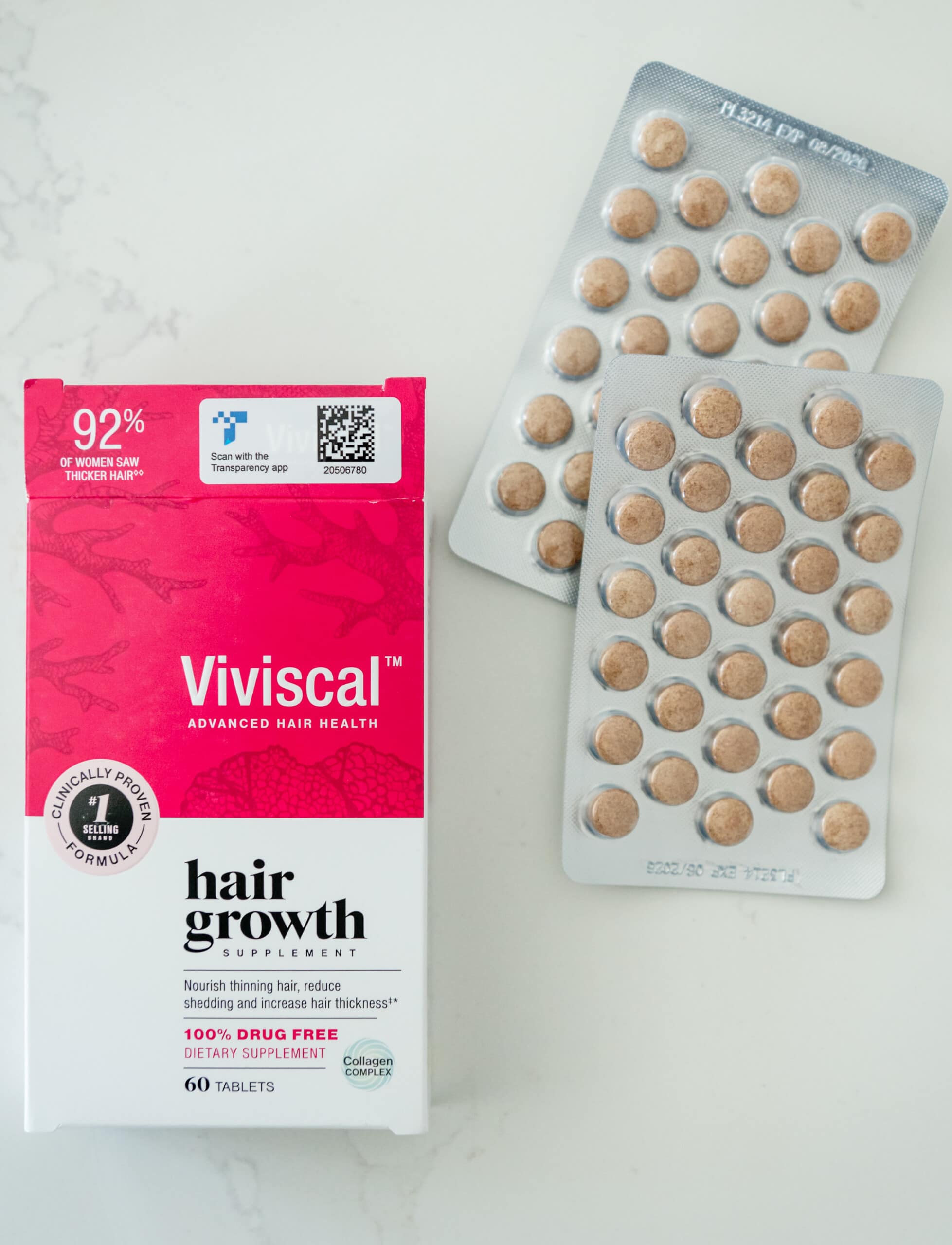
I am taking my hair renewal plan seriously and am doing more than just focusing on what I’m doing to my hair and putting on my hair. Healthy hair starts from within. I’m not only improving my diet, drinking more water, and taking my vitamins, but I’m also taking Viviscal™ Hair Growth Supplements.
Viviscal Hair Growth Supplements
I recently learned Viviscal is the #1 selling hair growth supplement in the U.S.+ After researching, I like that they are 100% drug-free and have been proven to improve hair thickness and reduce shedding within 3-6 months.* In a clinical study, 92% of women saw thicker hair, a 32% increase in terminal hairs, and a nearly 39% decrease in hair shedding/loss in just three months. Amazing! Three months is the perfect amount of time for me to get the results I want before our trip in May. I also like that Viviscal™ Hair Growth Supplements are suitable for all types of hair, so I don’t have to worry about whether or not it’s right for me. (Of course, consult your doctor or health professional if you have questions before starting a new supplement or medication.)
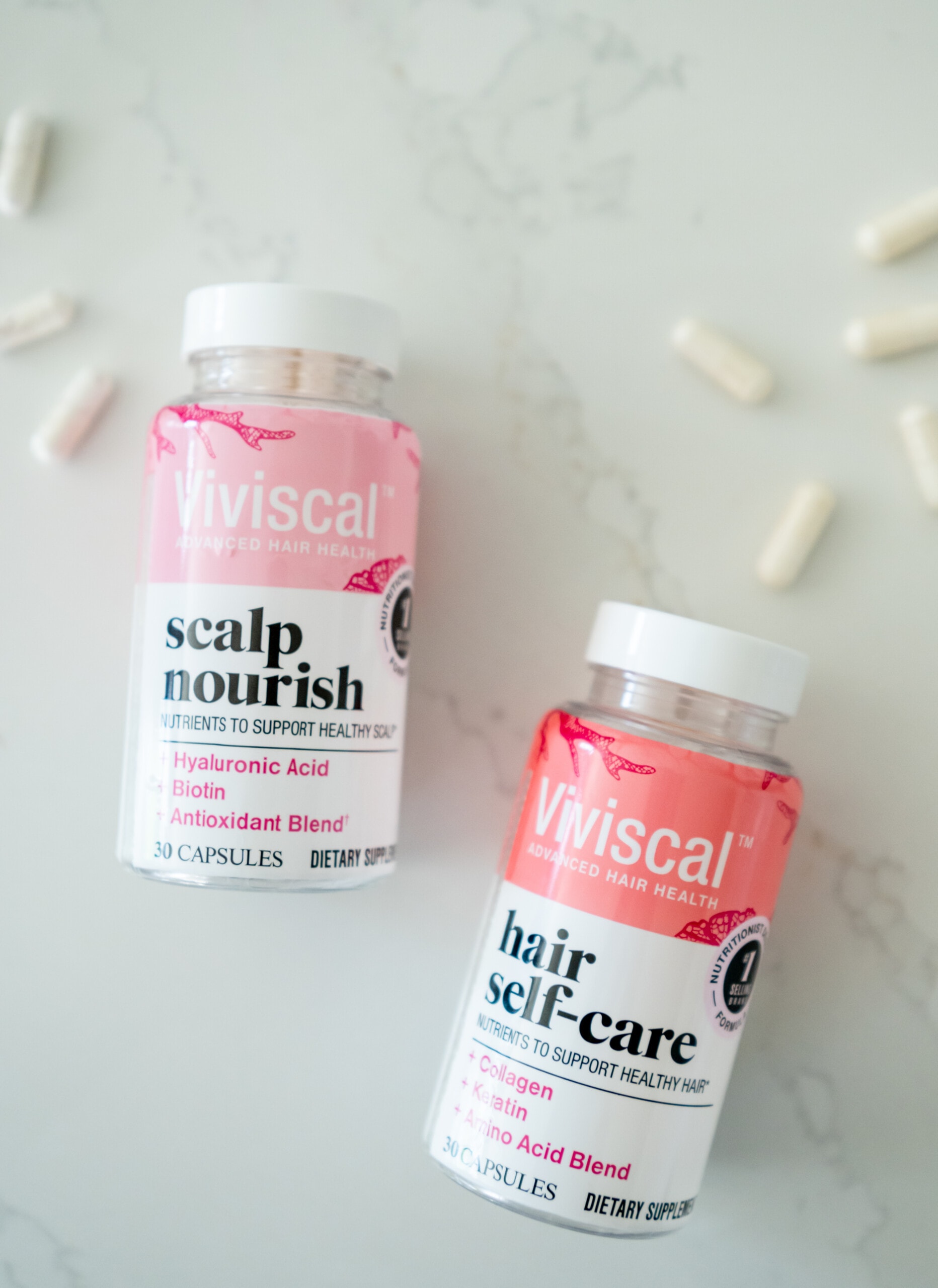
Other supplements I am taking are:
- Viviscal Hair Self-Care Supplements – nutrition formulated with collagen, keratin, and amino acids to support healthy hair structure and deliver nutritional building blocks, which are essential for healthy-looking hair
- Viviscal Scalp Nourish Supplements – nutrition formulated with hyaluronic acid, biotin, and antioxidants to support a healthy scalp environment by delivering essential nutrients to nourish and fortify root follicles, providing a strong foundation for beautiful, healthy hair to grow
Hair Products
Now that I know Viviscal understands the science of healthy hair growth and is 100% drug-free, I’ve decided also to use their entire line of hair products to help me reach my goal of having fuller, thicker-looking hair. Here’s my new hair routine:
Viviscal Exfoliating Scalp Scrub
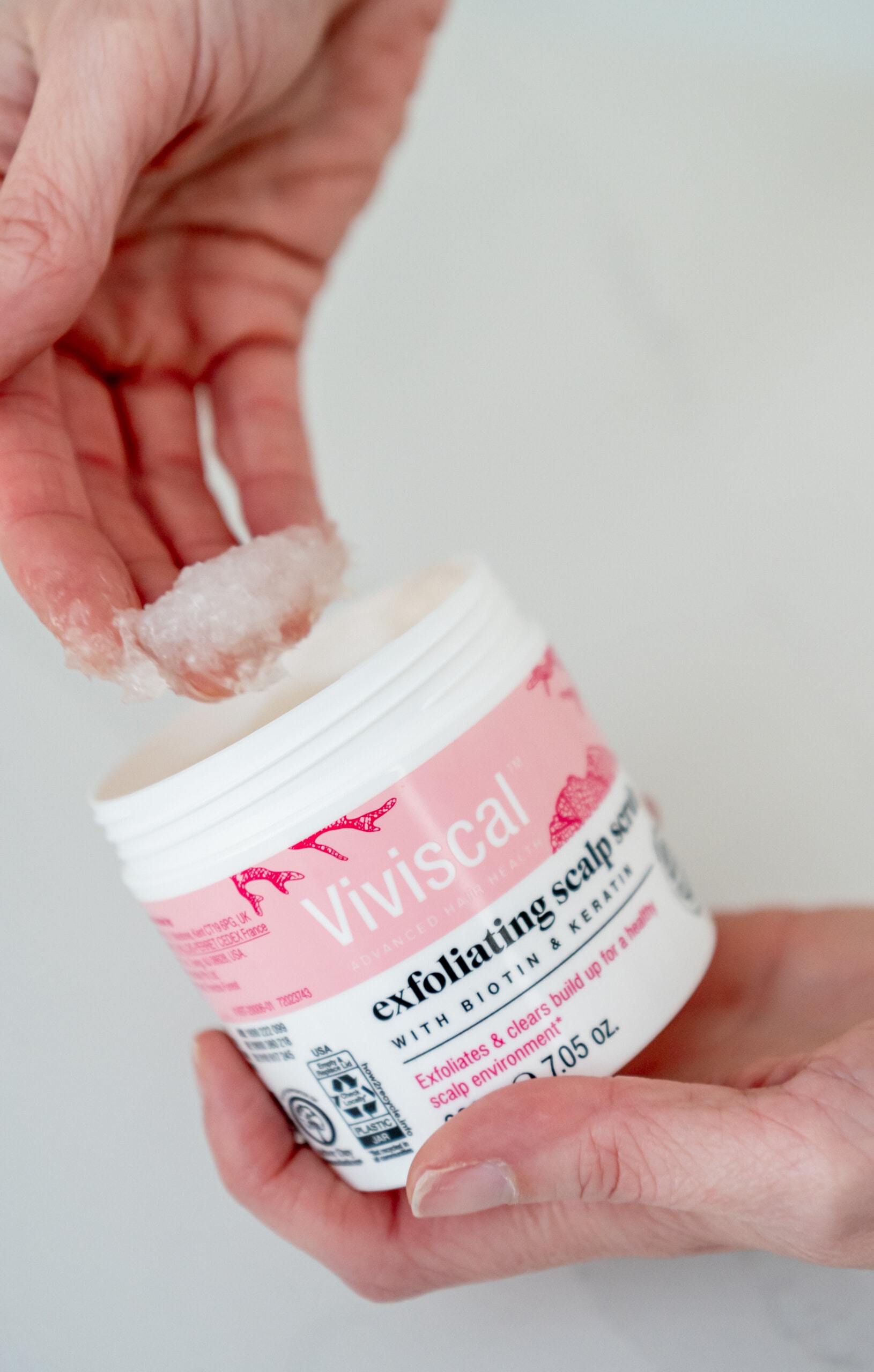
Healthy hair starts with a healthy scalp. Massaging and stimulating our scalp is good for encouraging healthy hair growth. Viviscal Exfoliating Scalp Scrub gently exfoliates and removes dead cells, buildup, and dirt from the scalp. This helps support a healthy scalp environment, resulting in less breakage and fuller-looking hair. I’m using this scrub once a week on my scalp before shampooing and conditioning to have a healthy hair foundation.
Viviscal Thickening Shampoo
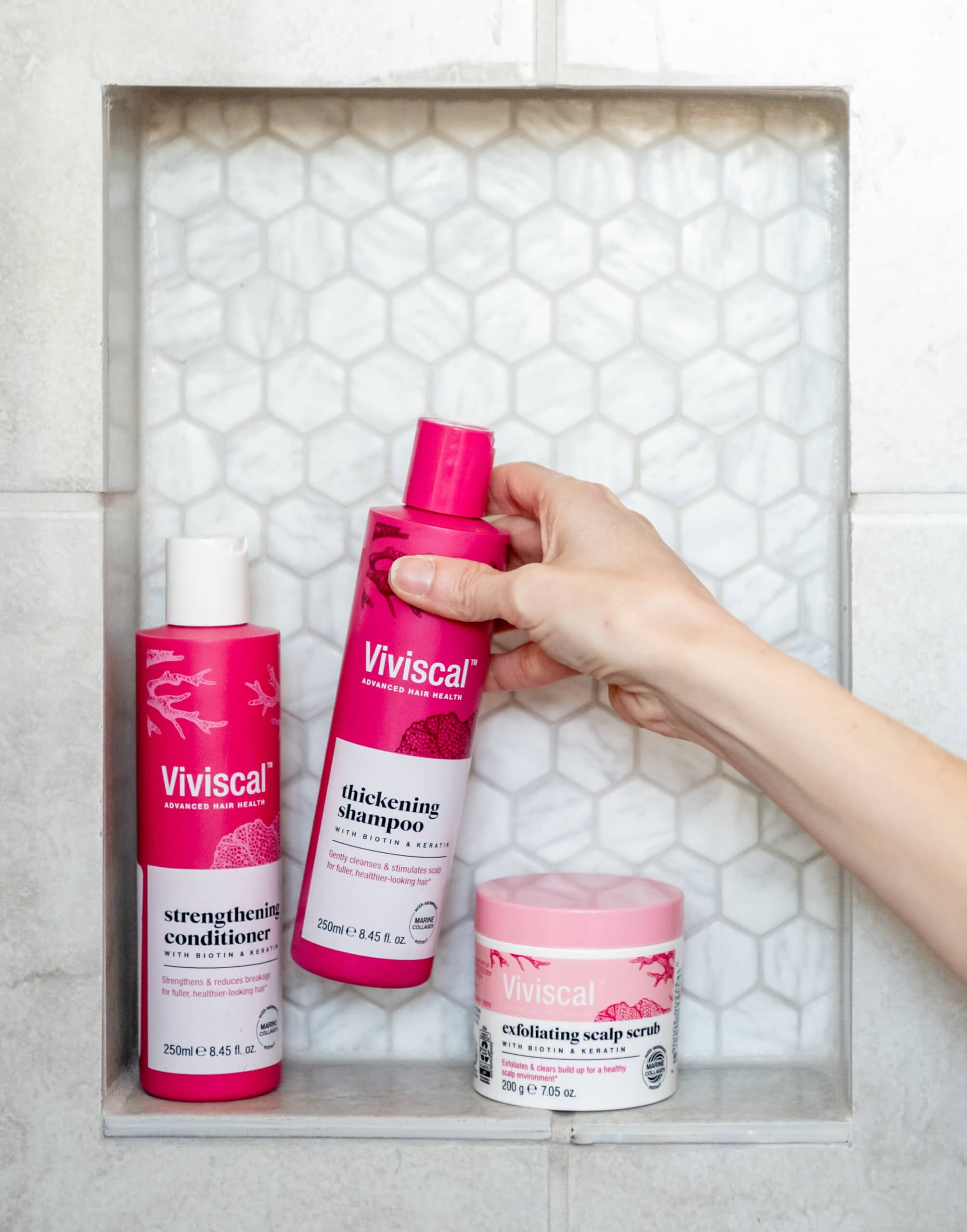
Selecting a shampoo formulated to nourish and volumize your hair is helpful. I’m using Viviscal’s Thickening Shampoo because it strengthens and reduces breakage* while gently cleansing and stimulating the scalp. I like that it is safe on color-treated hair because I have fine, thin hair with highlights and lowlights. I’m massaging this from my scalp to the ends of my hair. I used to wash my hair every other day, but I want to ensure I don’t dry out my scalp or hair. This is why I’m now stretching out my hair wash days to twice a week. (*Use in conjunction with Viviscal Strengthening Conditioner.)
Viviscal Strengthening Conditioner
I’m using Viviscal’s Strengthening Conditioner with their Thickening Shampoo. This conditioner nourishes and hydrates your hair without weighing it down. This is what I need with my thin, fine hair. It’s easy for my hair to get weighed down, but using a little bit of this does the trick! I use this every time I wash my hair after shampooing, but I only apply this on the ends of my hair. It helps strengthen the ends and reduces breakage.* (*Use in conjunction with Viviscal Thickening Shampoo.)
Viviscal Thickening Serum
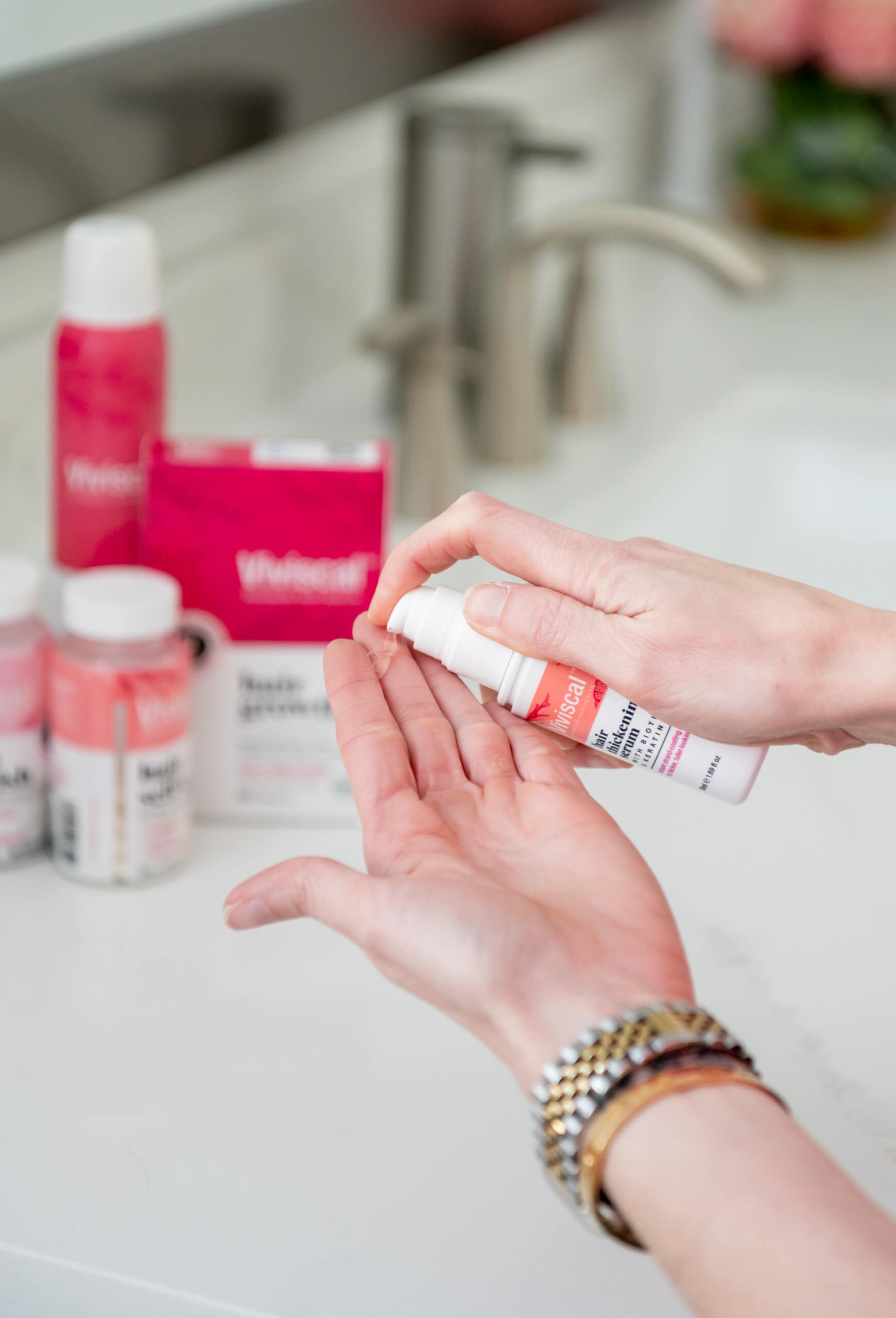
After showering, I softly dry my hair with my towel and gently brush through my damp hair. Then I apply 2-3 pumps of Viviscal Thickening Serum and coat my hair from mid-length to the ends. I like this leave-in treatment because it eliminates frizz* and is lightweight, so it doesn’t leave my hair greasy. You can also apply it to dry hair! This is great since I use this on my hair almost every day. (*Use in conjunction with Viviscal Thickening Shampoo and Strengthening Conditioner.)
Viviscal Volumizing Dry Shampoo
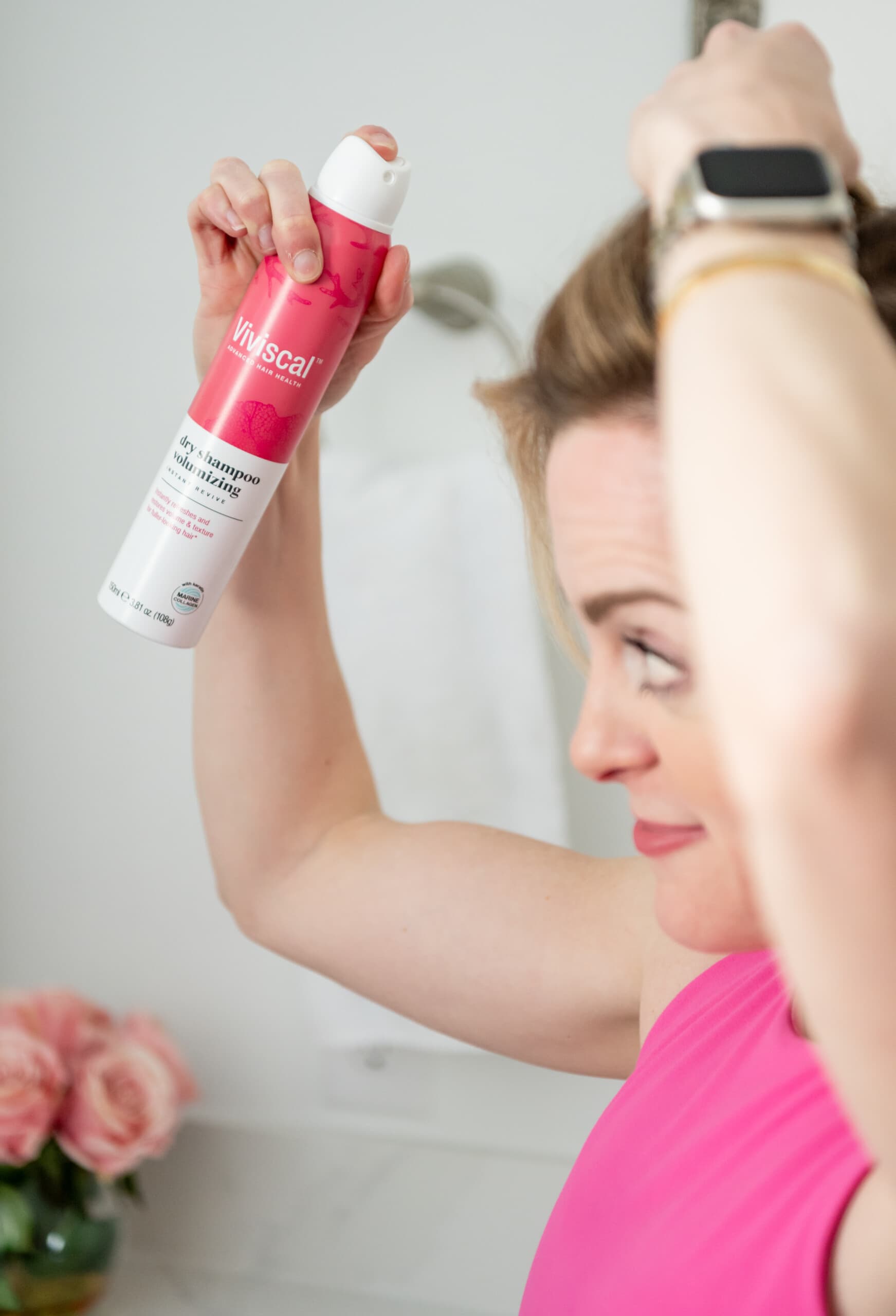
Now that I’m stretching my hair-washing days to twice a week, a good dry shampoo is essential. I’m using Viviscal Volumizing Dry Shampoo as a texturizing spray and heat protectant after I dry my hair. I use it daily to remove oil from my scalp and hair and refresh and restore its volume. This helps me go longer between washes, leaves my hair looking fuller, and gives it long-lasting freshness. I also love that it’s fortified with Keratin and Marine Collagen. These will protect my hair from heat damage caused by the sun and heated hair tools.
18 Hair Practices & Tips
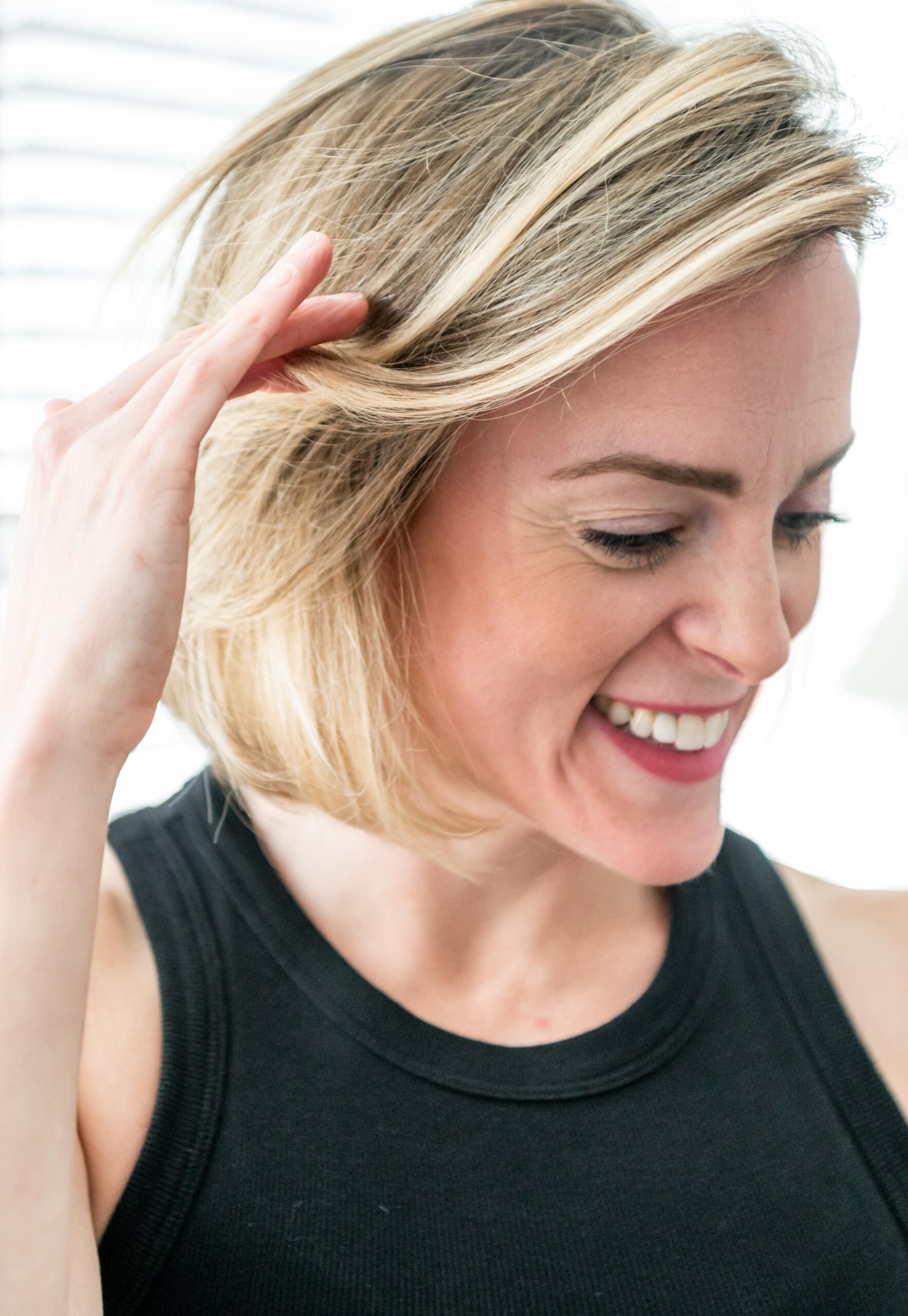
Now that you know what products I’ll be using for my new hair renewal, here are some practices I’ll also implement. I recommend these for healthier postpartum hair:
- Brush your hair before showering – distribute the natural oils from your hair to the ends and remove tangles before getting it wet.
- Wash hair less often – over-shampooing can strip natural oils from your hair and scalp and leave it dry. This can make it more prone to breakage.
- Don’t take extremely hot showers – the heat from the hot water can irritate your scalp and weaken your hair.
- Do a quick cold-water rinse in the shower – turn the water to cold after shampooing and conditioning to seal the cuticles shut and maintain healthy hair.
- Condition the ends of your hair – when conditioning, apply it on mid-shaft to the ends of your hair to limit weighing down your hair.
- Don’t rub your hair with a towel – rubbing your hair with a towel can cause tangles and breakage. Instead, squeeze it dry and let the towel absorb the water.
- Don’t go to bed with wet hair – hair is more vulnerable to breakage when wet, so dry your hair before bed.
- Massage your scalp daily and exfoliate your scalp weekly – this can help keep your scalp healthy, which creates a healthy environment for your hair.
- Limit the use of heated hair tools – a lot of damage is done to hair when heated tools are used frequently.
- Reduce heat setting on heated tools – instead of 400+ degrees, use hair tools that allow you to select the temperature and select 320 degrees or less.
- Use a heat protectant before styling – always apply a heat protectant on your hair before blow drying or using heat to style your hair.
- Don’t do too tight of hairstyles – wearing tight hairstyles and wearing it up frequently can cause hair to break.
- If you have fine hair, don’t use elastics – this can cause hair breakage.
- Eat a well-balanced diet – a healthy diet with B vitamins, protein, zinc, and essential fatty acids helps grow healthier hair.
- Drink plenty of water – staying hydrated helps keep your body and hair hydrated.
- Sleep on a silk – swap your cotton pillowcase for a silk pillowcase. Silk reduces the amount of friction between your hair and the fabric, which helps reduce breakage. Put your hair up in a loose top knot with a silk scrunchie.
- Trim your hair every 2 months – you want your hair to stay healthy and not break off at the ends. Trim the damaged ends and keep the length to continue growing strong, healthy hair.
- Fewer hair processing appointments – limit the number of times you process your hair with dyes, perms, and relaxers.
Improve Your Hair with Viviscal
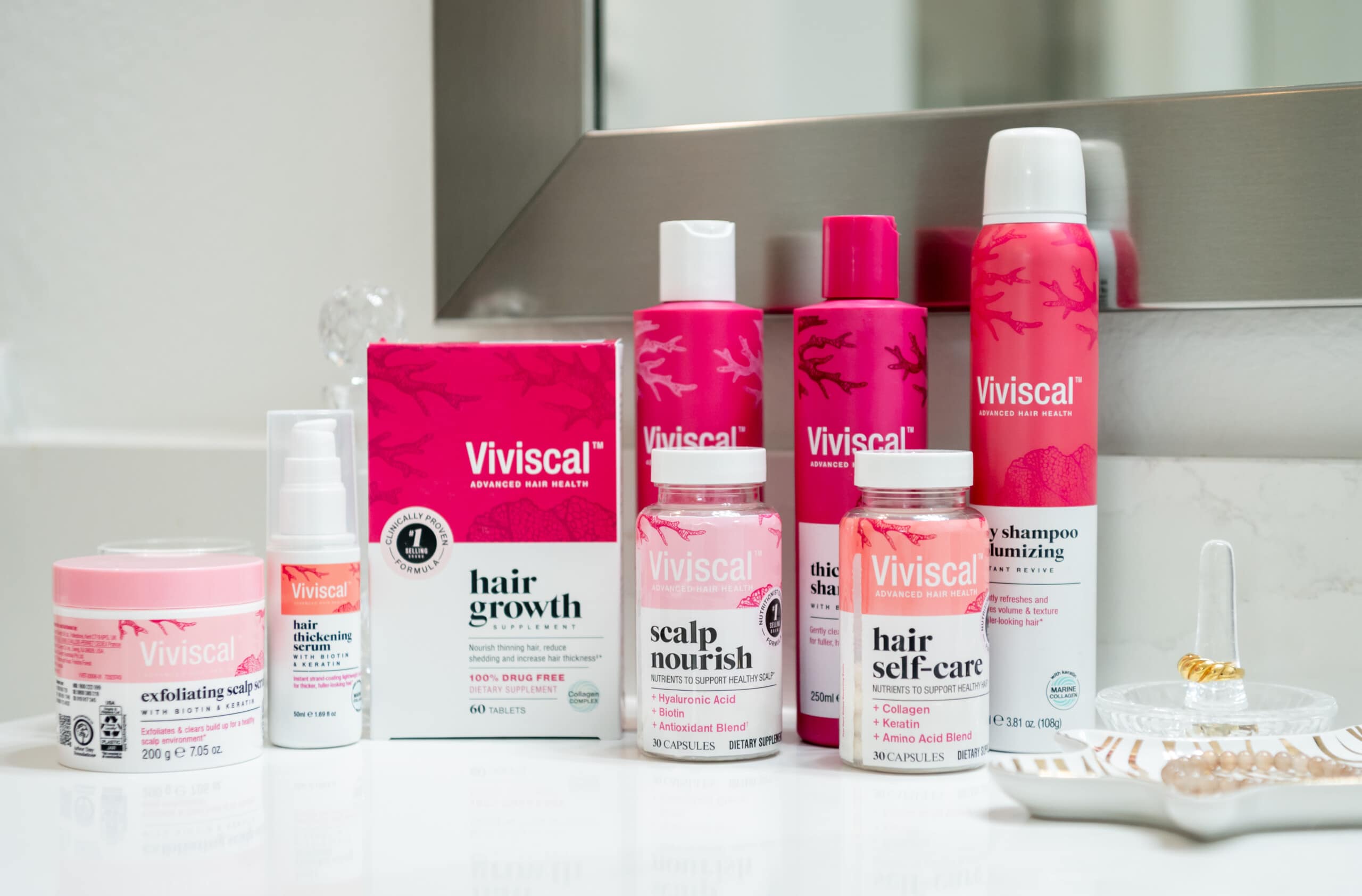
With this hair regimen using Viviscal products and these hair practices, I should achieve fuller, thicker, and healthy-looking hair by summer! I’m incorporating healthy habits into my life, and Viviscal naturally fits in with my wellness goals and New Year’s resolutions to take better care of myself. If you are postpartum or a mom with littles and want to work on your health, join me on this healthy hair journey to get results when warmer weather hits!
+ Based on Circana MULO unit sales for L52 wks ending 6/23/23.
* The Food and Drug Administration has not evaluated these statements. This product is not intended to diagnose, treat, cure, or prevent any disease.
Sponsored partner: Viviscal
